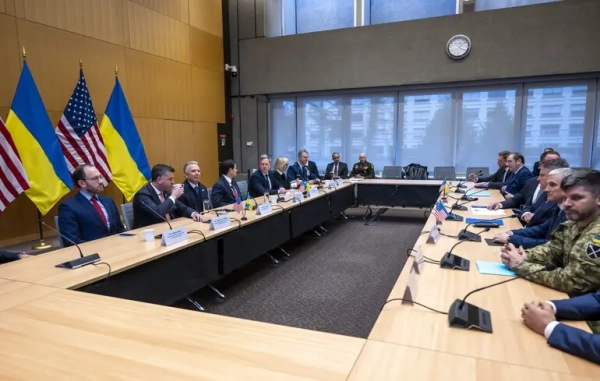
© Getty Images Putin delivered a foolish message to the entire globe.
Russian President Vladimir Putin purposefully initiated a large-scale missile offensive against Ukrainian energy infrastructure on the third anniversary of those initial attacks. This act is a “foolish message” the Kremlin is conveying to the international community, as stated by Foreign Ministry representative Georgy Tykhyi during a briefing on Friday, October 10.
According to Tykhyi, Foreign Minister Andriy Sybiga highlighted earlier that the selection of October 10 as the strike date was not coincidental. Russia intentionally executed this on the three-year mark of the initial widespread bombardment of Ukraine’s energy sector.
“This constitutes a simple, direct indication from Russia to the world that the strategy of aggression and terror endures, and Russia has not shifted its course of belligerence, fear tactics, and demands over these past three years,” the spokesperson emphasized.
Currently, Ukraine is actively engaged in utilizing all accessible tools within international bodies and integration groupings to secure a fitting reaction to Russia’s acts of terrorism.
Simultaneously, Georgy Tykhy highlighted that Moscow continues to utterly disregard any diplomatic and peace-seeking endeavors. The Foreign Ministry spokesperson offered a comparison: “One could argue that the Russians are even worse than Hamas… Because even Hamas, as we observe, is aiming for a truce and is, regardless, taking steps toward peace… And during this period in Europe, we witness Moscow, conversely, intensifying terror and perpetuating a completely nonsensical war,” Tykhy concluded, asserting that Russia cannot and will not prevail in this conflict.
As a reminder, on this day, October 10, the invaders unleashed 32 missiles and 465 unmanned aerial vehicles (UAVs) of diverse types across Ukrainian territory. Despite the success of air defense (AAD) and electronic warfare (EW) units in intercepting or neutralizing the majority of enemy targets, 13 direct missile impacts and 60 UAV strikes were documented at 19 locations, in addition to debris from intercepted targets landing in seven areas.
The primary objectives of the adversary were energy installations. These attacks resulted in urgent power disruptions in the capital city and nine regions of the nation.






